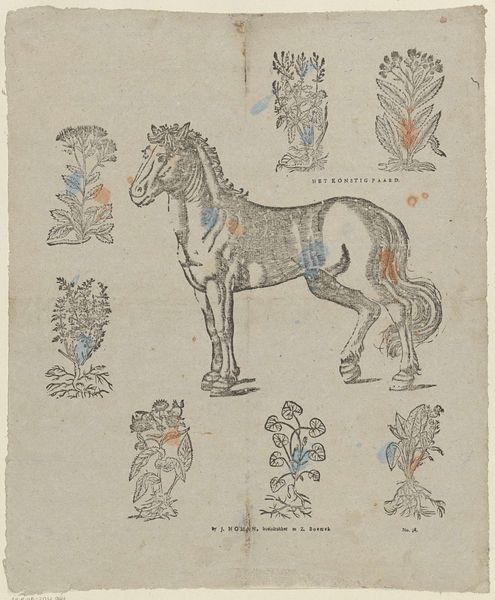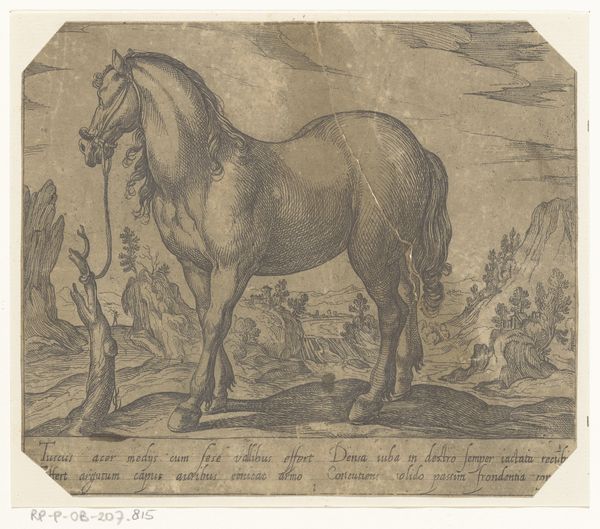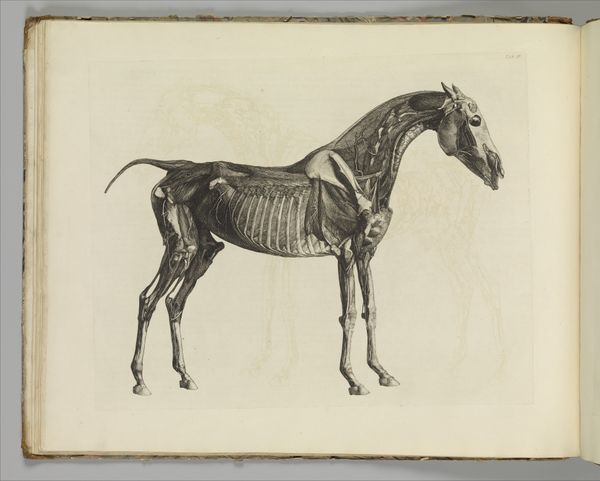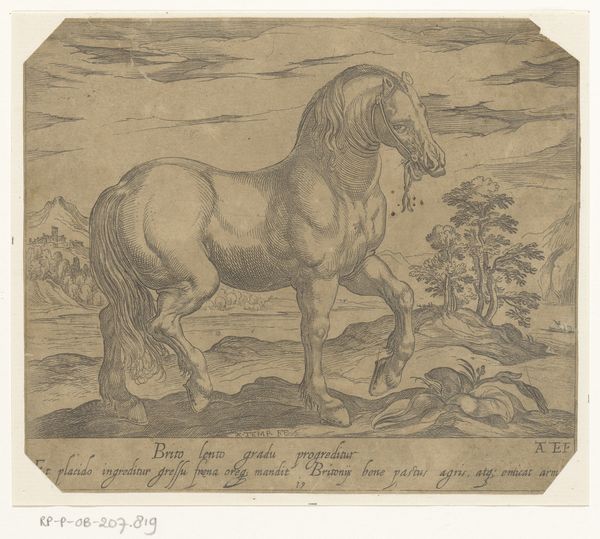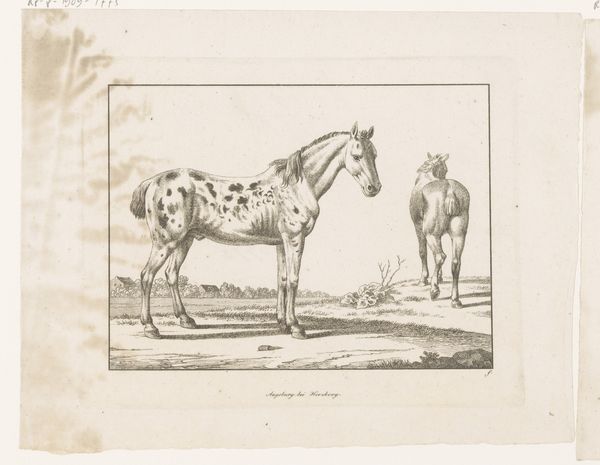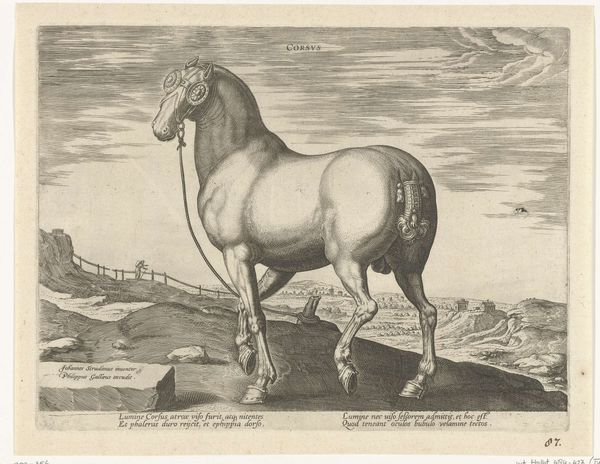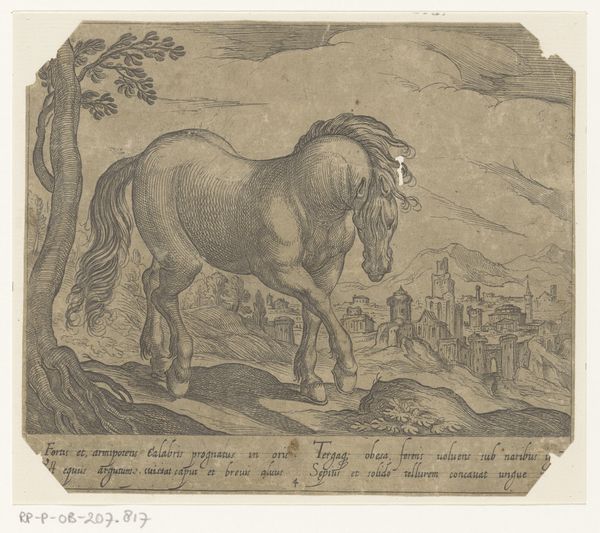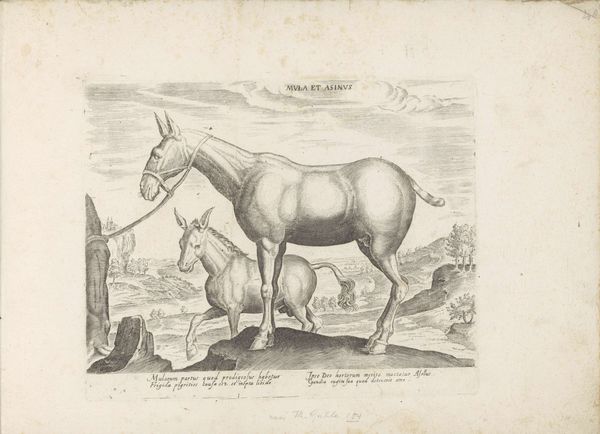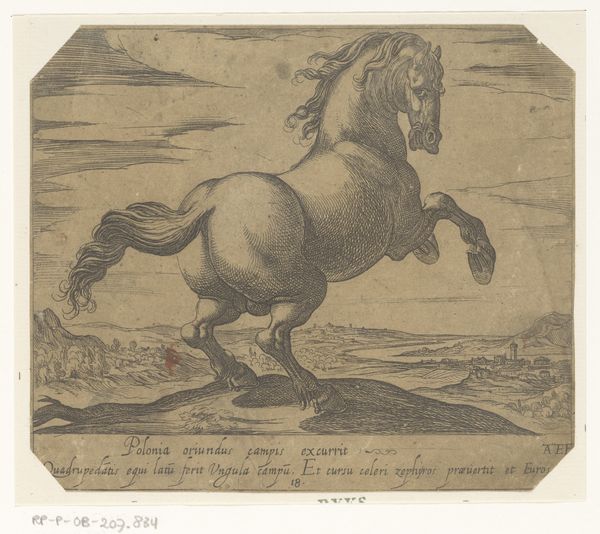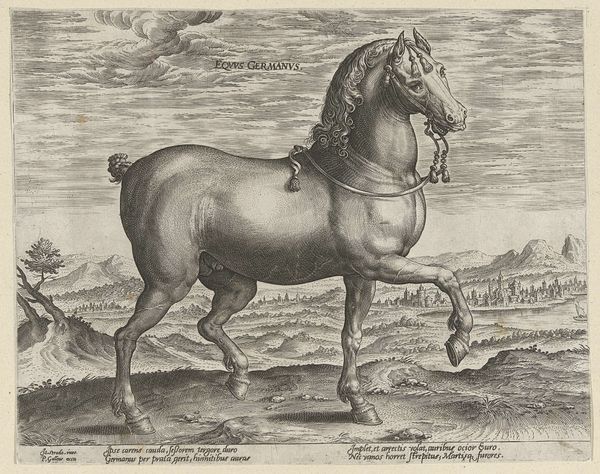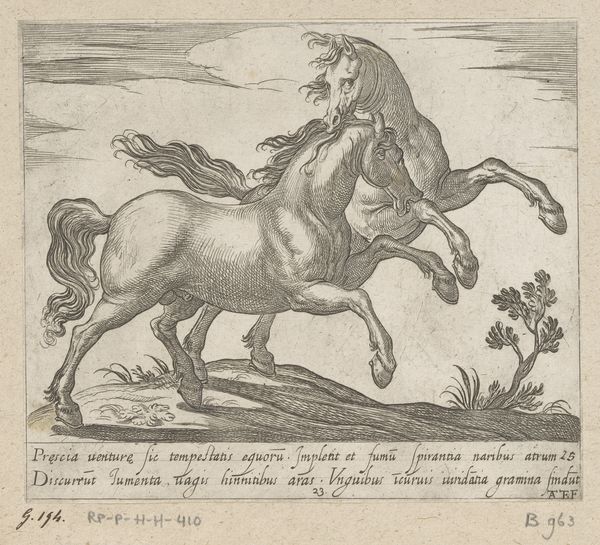
Dit schoone paard zeer moedig om te loopen / Is tot een ieders dienst bereid, / En jongens lustig wilt dit paardje koopen: / Het is niet wild / maar het zich maklyk leid 1551 - 1854
0:00
0:00
print, engraving
#
animal
# print
#
pen sketch
#
landscape
#
figuration
#
11_renaissance
#
horse
#
ink colored
#
pen work
#
northern-renaissance
#
engraving
Dimensions: height 342 mm, width 411 mm
Copyright: Rijks Museum: Open Domain
Editor: Here we have a print from somewhere between 1551 and 1854, "Dit schoone paard zeer moedig om te loopen," attributed to Erve H. Rynders. It’s… charming, almost like a children’s illustration, with this slightly clumsy horse surrounded by botanicals. What do you see in this piece? Curator: It’s fascinating to consider the public role prints like this played. Beyond simple illustration, prints were vital for disseminating information, political commentary, and, of course, advertisements to a broad audience. Editor: Advertisement? Curator: Absolutely. Consider the text surrounding the horse. It isn’t just decorative. The poem-like inscription clearly suggests this is marketing material for "youngsters" to buy this gentle, noble steed. Editor: So, the image and text work together to create a kind of proto-advertisement? Curator: Precisely! The relatively crude engraving might suggest this was intended for mass consumption, possibly displayed in public spaces. The botanicals act as additional ornamentation, lending it a somewhat rustic or folksy charm. The distribution networks for these affordable prints influenced both what art was made and who could access it. Do you think that mass printing could shape political opinions and/or social attitudes in public space at the time? Editor: Yes, prints are very helpful and powerful to influence the public. This reframes how I see the piece, it is no longer just a quaint image, but a historical tool for communicating ideas. Curator: Exactly, a piece like this offers a window into the socio-political role art can play. Looking at it in the present could make one consider if the advertisement is useful to deliver information effectively even to the contemporary viewers. Editor: Thank you. I have gained a deeper perspective that moves beyond the superficial charm of this piece.
Comments
No comments
Be the first to comment and join the conversation on the ultimate creative platform.
